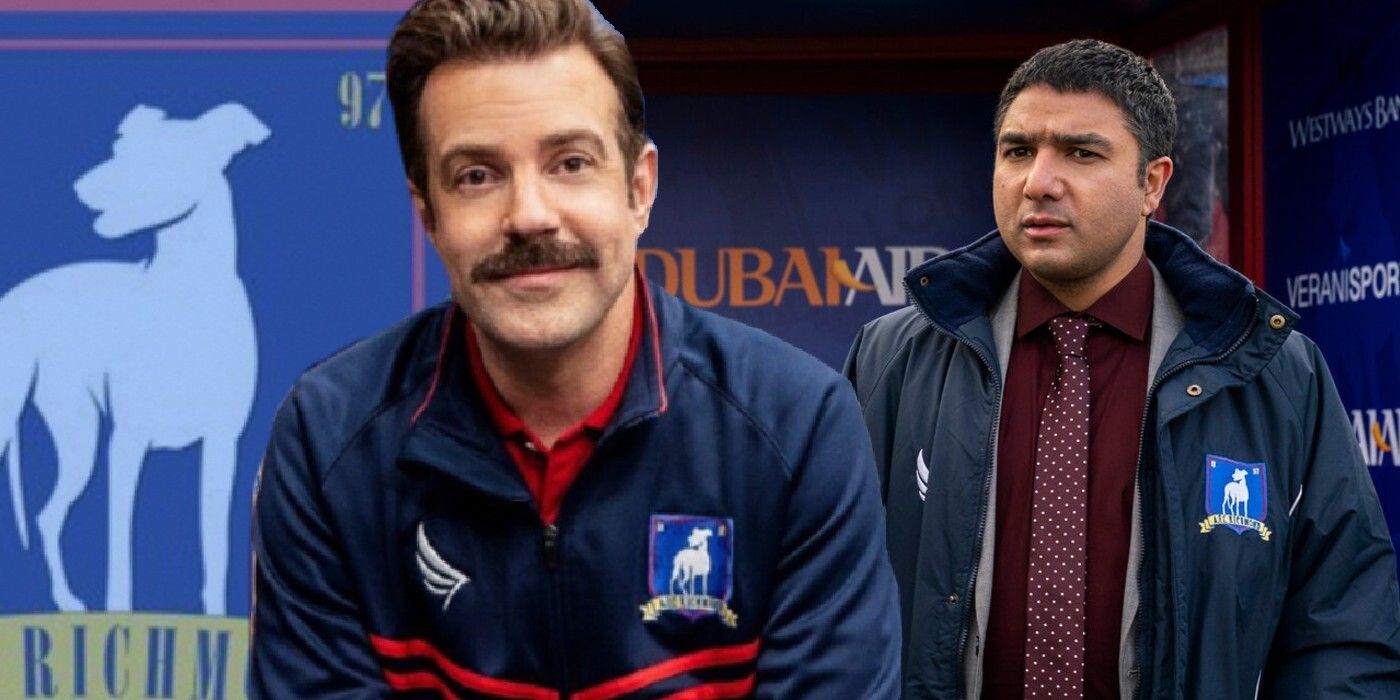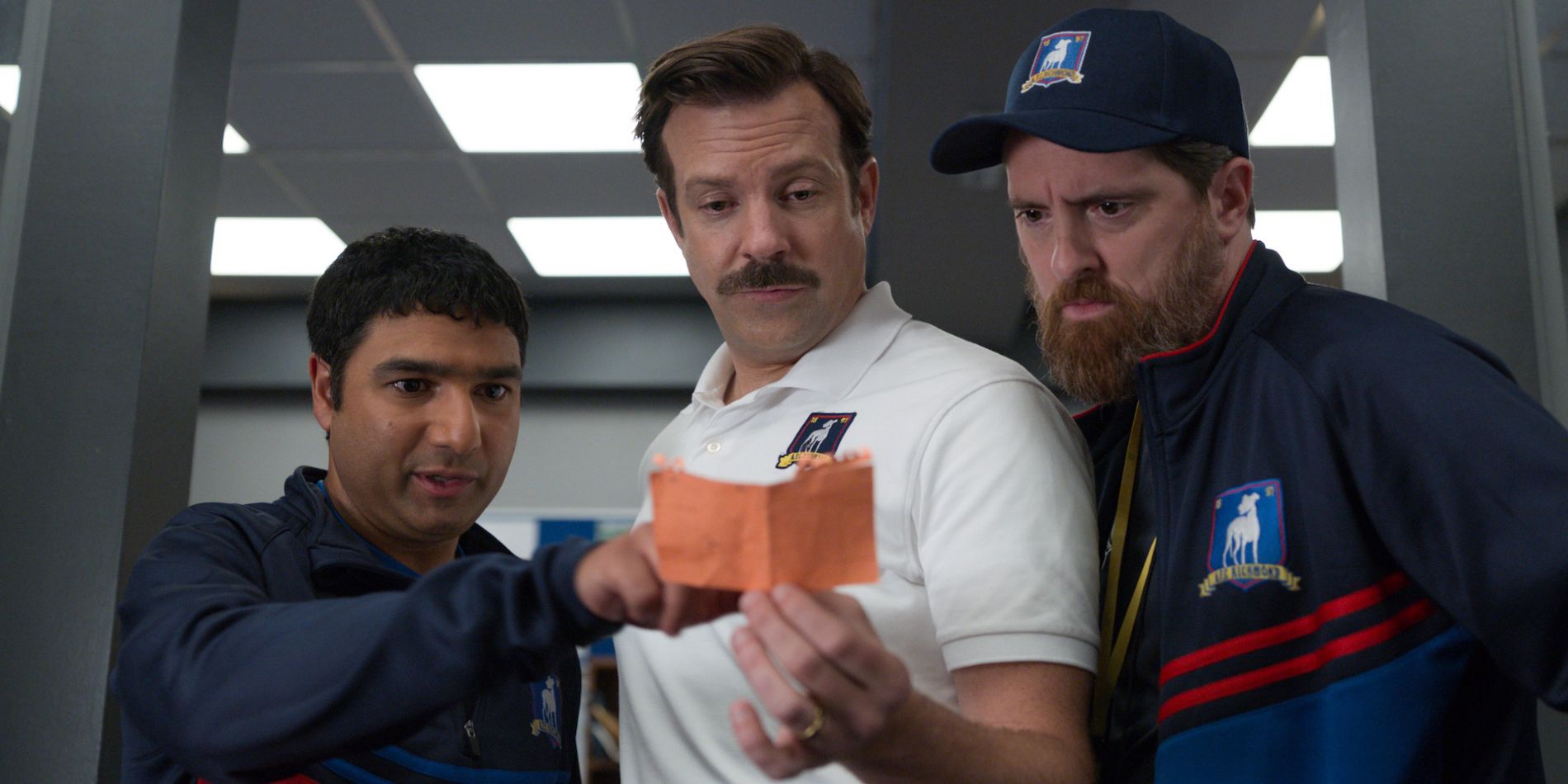Nate's late substitutions in Ted Lasso season 2, episode 6, have been pinpointed by fact-checkers to determine whether these tactics would actually work in real football. Apple TV's hit sports show, Ted Lasso is no stranger to showcasing questionable strategies from their effervescent American coach, with season 1's last-gasp trick play against Manchester City a prime example. Yet despite Ted's dubious playbook, Ted Lasso has been rightly praised for its accurate portrayal of the English Premier League and the matchday fervor its fans embody.
The latest episode of Ted Lasso sees AFC Richmond playing Tottenham in the FA Cup quarter-finals, with the sides level at 1-1 deep into extra time. Ted (Jason Sudeikis) is nowhere to be seen, while Coach Beard (Brendan Hunt) and Roy (Brett Goldstein) argue tactics on the touchline. Nate, fresh from his recent confidence training in the previous episode, takes matters into his own hands and orders an unprecedented triple substitution. He replaces his three attacking players with defenders, and Nate's plan works to perfection, with Ted Lasso's fictional AFC Richmond scoring on the counter against their confused opponents.
The question of whether Nate's late substitutions would work in real football or not is highly contentious. Nate's personnel switch would likely have had the opposite effect on his team, causing them to withdraw rather than nick a goal. There is also a shallow evidence pool to back up Nate's tactical plan, as very few managers in the real world have ever tried something as audacious.
Nate's move of swapping attackers for defenders in the dying embers of a match is actually common, although his reasoning for substituting is skewed. Managers often take off tiring attackers and bring on fresh legs to bolster their defenses and allow opponents less space. Yet this is ordinarily to protect a lead or hang on to a draw depending on the circumstances, but never to go for a win. For real footballers outside of Ted Lasso, bringing on three defenders and removing your main goal threats from the pitch would cause a team to withdraw and allow the opponent to have the lion's share of the ball. While counter-attacking is a viable option for any team under the cosh, there still have to be players on the pitch capable of finding a killer pass or scoring a goal. The narrative explains this in the latest Ted Lasso episode by having commentator Arlo White paint a picture of Sam Obisanya (Toheeb Jimoh) spraying the ball to Jamie Tartt (Phil Dunster), who scores. Still, in real life, the team would have been backed so far into their own half it is hard to imagine this romantic Ted Lasso effect happening.
Throughout the Premier League's illustrious history, there are ample examples of substitutions having a profound impact on games. On February 5th, 2011, Newcastle were 4-0 down at home to a scintillating Arsenal, and all hope seemed lost for the Magpies. Their manager (at the time) Alan Pardew made a formation switch at halftime, creating a five-person midfield to stifle Arsenal's attacking play. Newcastle made an incredible comeback, scoring 4 goals in the second half to draw 4-4 and spark jubilant scenes inside the stadium, highlighting the profound effect Pardew's tactical changes had. Managers swapping their strikers (in Ted Lasso's case, Dani Rojas) for big center-backs in the hope of creating a goal from thin air has also been known to happen. Still, there are no examples in living memory of managers replacing their entire attacking line with defenders. The simple truth is that while there are no guarantees in football, and Nate's tactics could, in some bizarre twist, work in a one-off example, there are far more effective ploys out there than the one employed by AFC Richmond's Nate in Ted Lasso.


